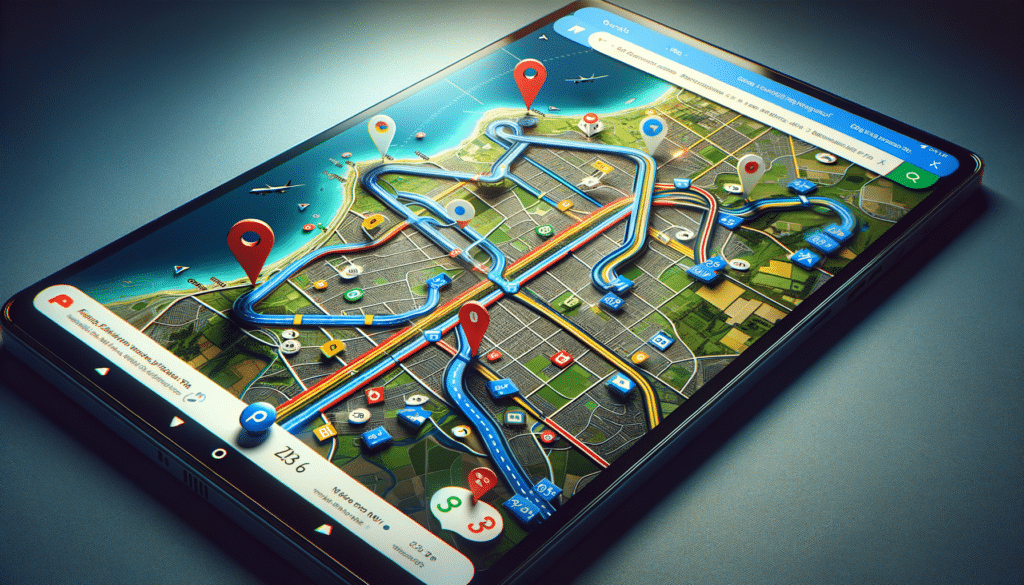Introduction to Google Maps Route Planner
In today’s fast-paced world, finding the most efficient route is crucial for both personal and professional travel. Google Maps Route Planner emerges as a pivotal tool, transforming how individuals navigate from one point to another. With its user-friendly interface and advanced features, it has become a go-to solution for millions. Understanding its capabilities can significantly enhance your travel experience, whether you’re commuting to work, embarking on a road trip, or managing a fleet of vehicles.
Features and Functionalities
Google Maps Route Planner is renowned for its diverse range of features that cater to various travel needs. Some of the key functionalities include:
- Real-Time Traffic Updates: The planner provides live traffic conditions, helping users avoid congestion and save time.
- Multiple Stop Planning: Users can add multiple destinations to a single trip, optimizing the route for efficiency.
- Customizable Routes: Options to choose the fastest, shortest, or most scenic routes.
- Integration with Calendar: Syncs with your calendar to provide timely reminders and route suggestions.
These features not only make travel more efficient but also enhance the overall user experience by providing tailored navigation solutions.
Comparing Google Maps with Other Route Planners
While Google Maps is a leading navigation tool, it’s essential to compare it with other available options to understand its unique advantages. Competitors often offer similar functionalities, but Google Maps distinguishes itself through:
- Comprehensive Data Coverage: Google Maps boasts extensive global data, ensuring accurate navigation in diverse locations.
- User Community Contributions: The platform leverages user feedback for real-time updates on road conditions and new routes.
- Seamless Integration: It integrates smoothly with various devices and applications, enhancing its usability.
These aspects make Google Maps a preferred choice for many users globally, offering reliability and accuracy in navigation.
Practical Applications and Use Cases
Google Maps Route Planner is not just for individual travelers; it serves numerous practical applications across different sectors. Businesses, for example, utilize it for logistics and delivery services, optimizing routes to save on fuel and time. Individuals use it for daily commutes, exploring new places, and even planning vacation routes.
Some notable use cases include:
- Fleet Management: Companies manage their vehicle fleets efficiently by planning and adjusting routes in real-time.
- Event Planning: Organizers use it to direct attendees to venues, ensuring smooth traffic flow and parking arrangements.
- Travel Planning: Tourists plan their itineraries, discovering attractions and local amenities along their routes.
These applications highlight the versatility and practicality of Google Maps in various real-world scenarios.
Future Developments in Route Planning Technology
As technology evolves, so does the potential of route planning tools like Google Maps. Future developments are expected to focus on enhancing user experience and integrating more advanced technologies. Potential advancements include:
- Artificial Intelligence: AI-driven predictions for traffic patterns and route suggestions.
- Augmented Reality: AR features for more interactive and immersive navigation experiences.
- Eco-Friendly Routes: Options prioritizing fuel efficiency and reduced emissions.
These innovations are set to redefine navigation, making it more intuitive, sustainable, and user-centric.
Conclusion
Google Maps Route Planner is an indispensable tool in modern navigation, offering a blend of innovative features and practical applications. Its ability to adapt to user needs and integrate with emerging technologies ensures it remains at the forefront of route planning solutions. As we look to the future, the continuous evolution of such tools promises to make travel more efficient, enjoyable, and environmentally conscious.




